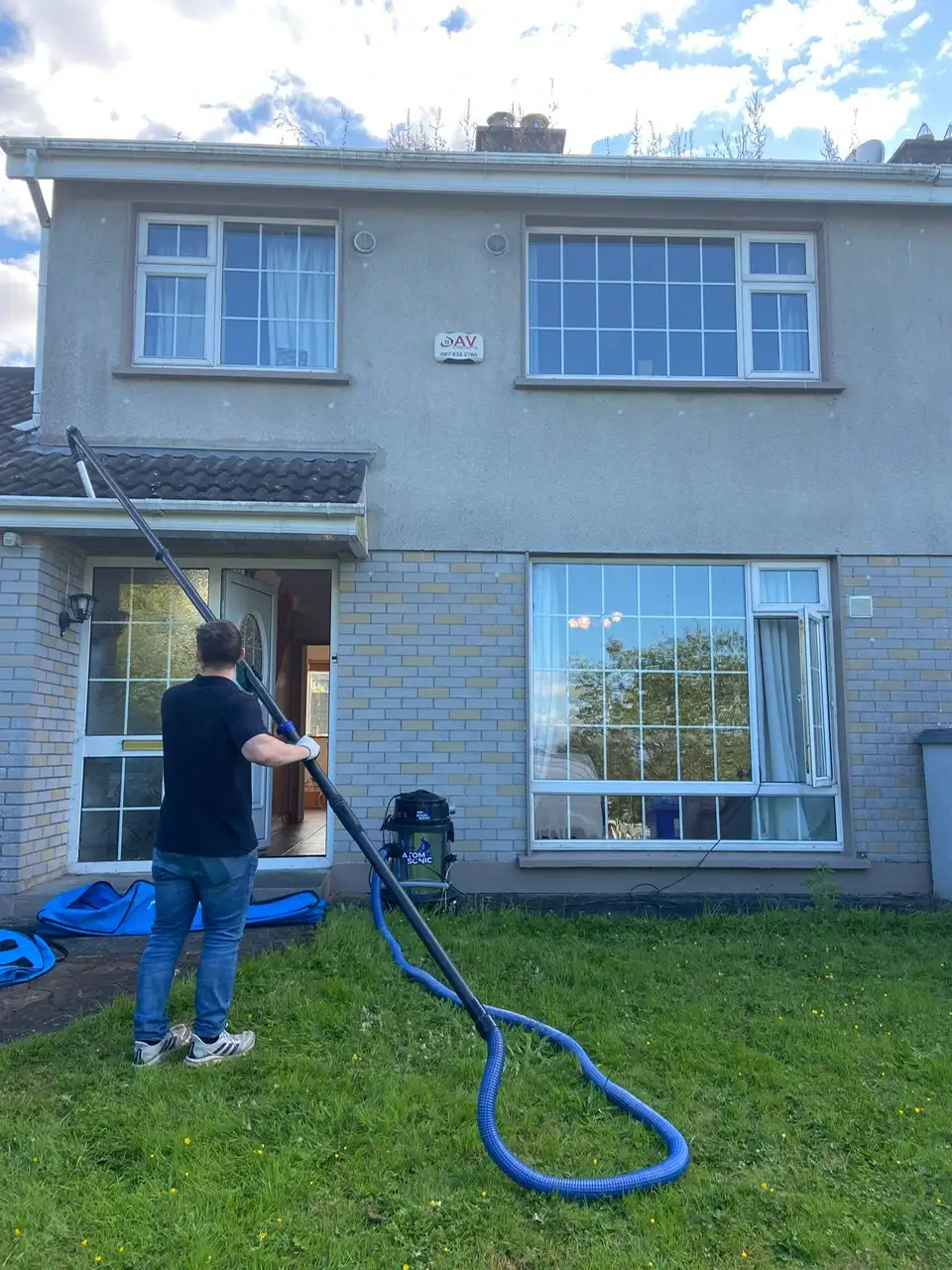
How long does it take to clean gutters?
Cleaning gutters is an essential task that helps prevent water damage, roof leaks, and other costly issues for both residential and commercial properties. However, the time it takes to clean gutters can vary depending on factors such as the size of the building, the method used, and whether any advanced equipment like gutter vacuums is involved. Below, we’ll break down the time it typically takes to clean gutters in residential and commercial settings, and discuss the difference between traditional cleaning methods and newer, more efficient vacuum systems.
Residential Gutter Cleaning
For an average-sized home, residential gutter cleaning can take anywhere from 1 to 3 hours. Several factors affect the time required, such as the length of the gutters, the height of the house, and how much debris has accumulated. Single-story homes with relatively clear gutters can usually be cleaned in less than an hour, especially when professionals are handling the job. However, for homes with extensive gutter systems, multiple stories, or heavy debris buildup from trees, the process can take closer to 3 hours or more.
The frequency of gutter cleaning also plays a role. Homes that are cleaned regularly may require less time, as there's less debris to remove, compared to gutters that haven’t been touched in over a year. Professionals will typically assess the condition of the gutters beforehand to determine how long the process will take.
Commercial Gutter Cleaning
Commercial gutter cleaning typically takes longer due to the larger scale of the buildings and more complex gutter systems. Depending on the size of the commercial property, the process can take anywhere from 3 to 6 hours or even an entire day for larger facilities like warehouses, office buildings, or shopping centers.
Multi-story commercial properties require specialized equipment to reach the gutters safely, especially when the building is taller or has multiple roof levels. Additionally, the debris in commercial gutters tends to accumulate more heavily, especially in industrial areas where dirt, leaves, and other materials can easily clog the system. The more intricate the gutter system, the longer the cleaning will take, though the use of professional teams and equipment can speed up the process.
Gutter Vacuums vs Traditional Cleaning Using a Ladder
One of the most significant factors in the time it takes to clean gutters is the method used. Traditional gutter cleaning, which involves using ladders to manually scoop out debris, is a time-consuming and labor-intensive process. Cleaning with ladders requires moving the ladder multiple times, which can be slow and risky, especially on taller buildings or uneven terrain. In residential settings, this can easily add an hour or more to the task, while in commercial settings, it can make the job take much longer.
In contrast, gutter vacuums have revolutionized the process by allowing workers to clean gutters safely and efficiently from the ground. With high-reach poles and powerful suction systems, debris is removed quickly without the need to climb ladders or constantly reposition. This reduces the overall time spent on the job and enhances safety. For residential properties, using a vacuum system can cut cleaning time in half, while for commercial buildings, the reduction in time is even more significant, especially when dealing with high gutters and complex structures.
The time it takes to clean gutters depends largely on the size of the property and the method used. For residential homes, gutter cleaning generally takes between 1 and 3 hours, while commercial properties can take 3 to 6 hours or more. The introduction of gutter vacuums has significantly reduced cleaning times for both residential and commercial settings, making it a safer and more efficient option compared to traditional ladder-based cleaning methods.
By choosing professional services that utilize modern equipment like vacuums, property owners can ensure that their gutters are cleaned thoroughly and efficiently, saving both time and potential damage in the long run.
 GET A QUOTE
GET A QUOTE


